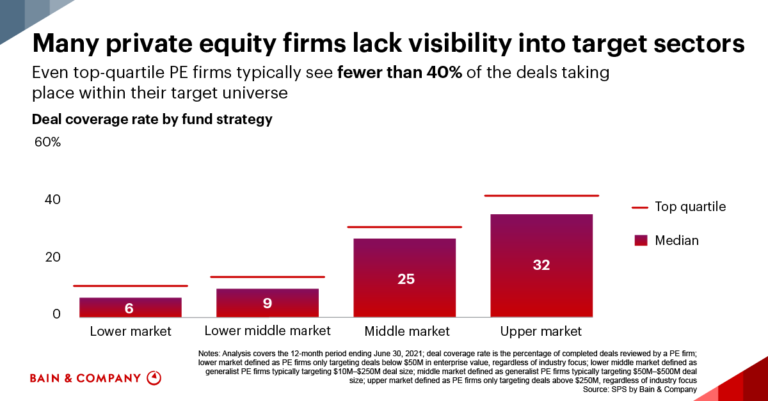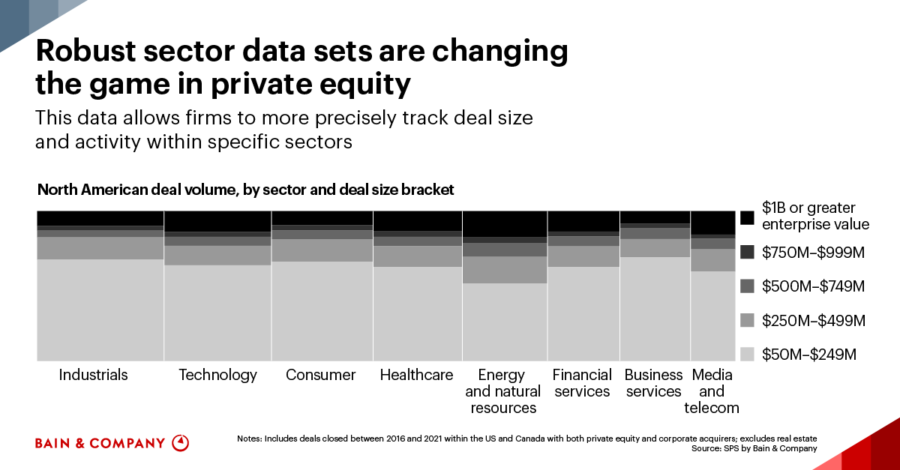This blogpost is a summary of SPS data points and features referenced in Bain & Company’s Global Private Equity Report. Download the full report here.
A well-defined sector strategy can lead a private equity firm to capitalize on the most relevant deals for their investment criteria, in industries producing the highest returns at a given time. This model is not easily attained in today’s deal sourcing environment, even for the most specialized sector-focused funds. And it’s virtually impossible to construct without a robust data analysis engine to instruct deal teams in areas to focus.
Bain & Company’s Global Private Equity Report, released annually each March, features a chapter delving into the use of data and analytics technology to elevate sector strategy – Raising Sector Strategy to the Next Level. This section, co-authored by SPS Founder & CEO Nadim Malik, references findings gathered from SPS data to demonstrate the profound effect that employing an analytical approach can have on returns for sector-focused funds.
Below are the key points applying SPS data for a data-driven sector strategy.
- Our annual Deal Origination Benchmark Report (DOBR), generated in October 2021, revealed that most firms see only 15% to 30% of deals in their target segment – and even top-quartile performers typically see no more than 40%. With transaction-level data on nearly ninety-thousand closed deals, the SPS Portal allows firms to see relevant deals they missed, view intermediaries and individual bankers closing deals in their target universe, identify attractive PE assets before they come to market, and devise efficient deal sourcing strategies built around productive relationships.

- To compete within a specific sector, firms must first gain a clear perspective of deal activity in that area – who is involved in transactions, the size of deals being closed, and how broadly deals are being shopped. Tracking deal data across more than 500 subsectors, SPS provides insight into each of these areas on a granular level – including data on active buyers, lenders, and intermediaries as well as a Sell-Side Process Index, which reveals how competitive the process was for a given deal.
- Contrary to the results of last year’s DOBR, many PE firms believe they’re seeing a large portion of deals in their target market. Record levels of deal flow in recent years has contributed to this misconception. Data analysis and reports like the DOBR, generated custom for each client, provide irreplicable insight into a firm’s individual sector coverage compared to the average and top-quartile performing firms in their peer group. Furthermore, analyzing gaps in market coverage at a granular level allows firms to identify which deal sourcing methods and relationships to prioritize moving forward.

While analysis has long been the modus operandi by which private equity firms formulate success, the applications of data and technology to refine investment strategies are still being actualized. And for firms pursuing a defined sector strategy, adopting modern deal data and analytics tools may just take your sourcing efforts to the next level.
See Bain & Company‘s full Global Private Equity Report 2022.

